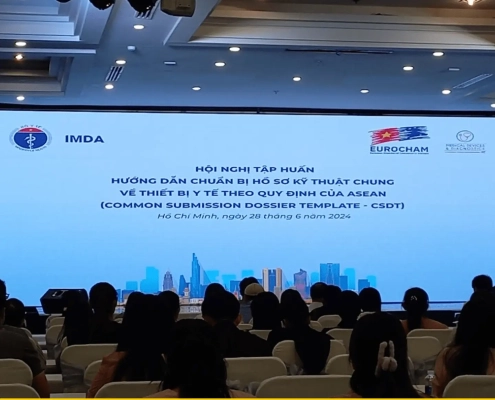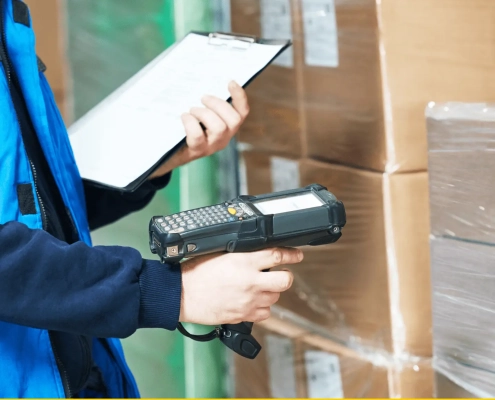Come grow with us in the US in Thailand in China in Korea in the Philippines in Taiwan in Hong Kong
Artificial Intelligence (AI) Software Registration in Singapore
Published July 23, 2020
In December 2019, the Health Sciences Authority (HSA) of Singapore’s Ministry of Health released guidelines regarding software registration in Singapore, including a major section dedicated to AI software. The HSA stresses that these measures act as guidelines and are not official regulatory controls.
UPDATE: New guidance was issued in April of 2022 and can be found here.
The guidelines categorize software into four categories: software embedded in medical devices, standalone software, standalone mobile applications and web-based software. Registration applications are submitted according to the the ASEAN Common Submission Dossier Template (CSDT) format and may be prepared from the International Medical Device Regulators Forum’s (IMDRF) Non-In Vitro Diagnostic Medical Device Market Authorization Table of Contents (nIVD MA ToC). The HSA has also provided guidance on the mapping between the corresponding sections in the IMDRF ToC dossier and CSDT available here.
TOTAL PRODUCT LIFE CYCLE (TPLC) AND CONTINUOUS LEARNING AI
The HSA recommends that software medical device manufacturers adopt a Total Product Life Cycle (TPLC) approach, overseeing requirement management, risk assessment, software verification/validation, change management and traceability through the duration of the software’s life cycle. While reviewing the entire process will be critical to validating the effectiveness of the claims, the HSA will also pay special attention to post market surveillance and ongoing model monitoring activities, especially when it comes to “continuous learning” AI-MDs.
Continuous learning AI-MDs will also need to submit the following:
- Description of the continuous learning process during deployment.
- Safety mechanisms meant to detect anomalies and any inconsistencies that would affect the products performance.
- Comparison between the real world data that will be collected and the original training set to ensure that ongoing evaluation is consistent with the original data evaluated.
- Processes to ensure data integrity, reliability and validity.
- Software version controls in case roll-backs to a previous version is required.
- Validation and verification activities to ensure performance remains within pre-defined boundaries.
- Additional traceability requirements dependent on deployment structure, clinical use or user training requirements for different versions.
CLINICAL EVIDENCE REQUIREMENTS
The level of scrutiny and clinical data required during the application process will be determined by the significance of the information being produced. Decision making devices, locally referred to as a “sole determinant” will require more evidence, like clinical studies or data, than those in more of a supporting role. Support devices are broken down into two categories; informing or driving. Those that “inform” use early detection mechanisms that are then confirmed by a practitioner and/or additional tests. Most common types of informing devices are wearable technologies that can detect blood pressure, heart arrhythmias or sleep patterns. “Drive” devices, on the other hand, typically assist practitioners to mitigate or prevent diseases or conditions, such as software programs that help oncologists evaluate mammograms.
IMPORTING AND INVOICING FOR MEDICAL DEVICE SOFTWARE
It is important to note that software as a medical device (SaMD) even without physical forms must still adhere to standard medical device labeling, importing and invoicing requirements. For example, the manufacturer will still need to list a licensed Medical Device Importer on the Singapore Medical Device Register (SMRD) listing. That entity will have primary post market vigilance responsibilities in Singapore. Furthermore, medical device sales must be invoiced by a local entity with a Medical Device Sales License that will be responsible for VAT payments. These requirements apply to software that is downloaded directly from the internet.
AI IN THE MEDICAL DEVICE/IVD INDUSTRY
It is important to understand the regulatory requirements for software registration as Software as a Medical Device (SaMD), AI and Machine Learning (ML) become increasingly integrated into medical devices and health care. These technologies can improve the accuracy of diagnoses, optimize patient experience in hospital systems, perform mass data collection and enhance robot-assisted surgeries by using adaptive software that learns to recognize new patterns.
The evolving nature of these technologies has prompted regulatory bodies to create new registration guidelines that apply for the duration of the software’s life cycle. These guidelines will likely adapt as the uses of AI expand in the coming years. Singapore is the first Asian Market to provide guidelines for AI, but other countries will need to release guidance because current regulatory controls are not sufficient for this robust technology. Asia Actual will report on future guidance as it is released.
CONTACT ASIA ACTUAL TODAY
Asia Actual is experienced in registering AI products in Singapore and throughout the region, including for clinical or research use.
Please contact Asia Actual if your product uses AI and would like to learn more about the regulatory requirements and market potential in the region.
HSA’s Guidelines can be found here.






